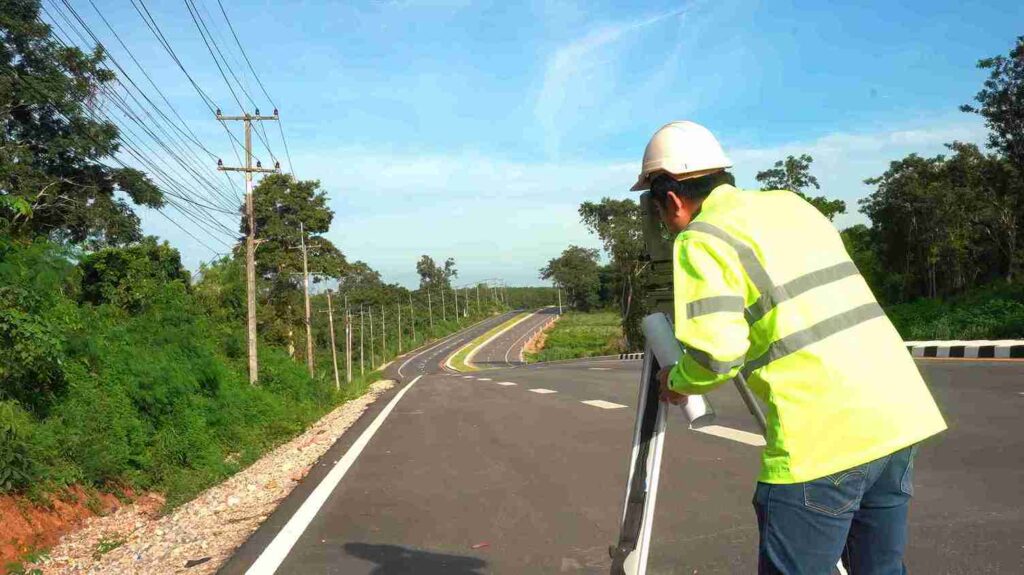
Introduction
Whether you’re a civil engineer, contractor, or aspiring surveyor, understanding how to use land surveying equipment is crucial for accurate site planning and execution. From marking property boundaries to setting out construction layouts, surveying instruments help translate blueprints into real-world coordinates.
In this guide, we’ll walk you through the most common land surveying tools and how to use them effectively on the field.
📏 1. Total Station – Measure Angles and Distances with Precision
A Total Station combines an electronic theodolite and a distance meter, allowing you to measure angles and distances from a single point.
How to Use a Total Station:
- Set up the tripod on stable ground and level it.
- Mount the Total Station and calibrate it using the bubble level.
- Sight the prism or the point of interest.
- Measure and record horizontal/vertical angles and distances.
- Export data to software like AutoCAD or Civil 3D.
✅ Best for: Topographic surveys, layout works, boundary marking.
🛰️ 2. GPS/GNSS Receiver – Get Coordinates Anywhere
GNSS (Global Navigation Satellite System) receivers capture satellite signals to provide accurate location data.
How to Use a GNSS Receiver:
- Power on the base and rover receivers.
- Wait for satellite lock (RTK mode improves accuracy).
- Walk the site or mark specific points.
- Save coordinate data and transfer it to mapping software.
✅ Best for: Large land parcels, control surveys, utility mapping.
📐 3. Auto Level or Dumpy Level – For Elevation and Leveling
This optical instrument helps measure height differences between points, ideal for drainage or roadwork.
How to Use an Auto Level:
- Set up the tripod and attach the level.
- Use foot screws to adjust the instrument until the bubble is centered.
- Sight through the eyepiece to a leveling staff held vertically.
- Read and record the measurements.
✅ Best for: Gate level computation, ground leveling, foundation work.
🎯 4. Theodolite – Angle Measurement Made Easy
A Theodolite is used to measure horizontal and vertical angles, crucial for triangulation and control points.
How to Use a Theodolite:
- Mount it on a leveled tripod.
- Align it with a known point.
- Rotate the telescope to sight targets.
- Lock and read the angle scales.
✅ Best for: Boundary surveys, geodetic measurements.
🔗 5. Measuring Tape and Chains – Traditional Yet Reliable
Before digital devices, chains and tapes were the go-to tools for land measurements—and they’re still useful today.
How to Use a Survey Chain or Measuring Tape:
- Stretch the chain between two points.
- Keep it level and straight for accuracy.
- Use plumb bobs and arrows to maintain alignment.
✅ Best for: Short distance surveys, legal boundary checking.
🧠 Pro Tips for Accurate Surveying
- ✅ Always calibrate instruments before use.
- ✅ Set up over a known benchmark or control point.
- ✅ Avoid obstructions (trees, buildings) when using GPS.
- ✅ Double-check measurements for critical points.
- ✅ Record everything — sketch diagrams and backup data.
📦 Final Thoughts
Learning how to use land surveying equipment isn’t just about operating tools—it’s about precision, planning, and problem-solving. By mastering devices like Total Stations, GPS units, and Auto Levels, you’ll ensure smoother workflows and more accurate project outcomes.
Whether you’re surveying a new site or setting out for construction, having the right knowledge and equipment makes all the difference.
📚 Want More Help?
Need expert surveying services in Dubai or the UAE? Contact Northern Engineering Survey for accurate, fast, and reliable land survey solutions.
